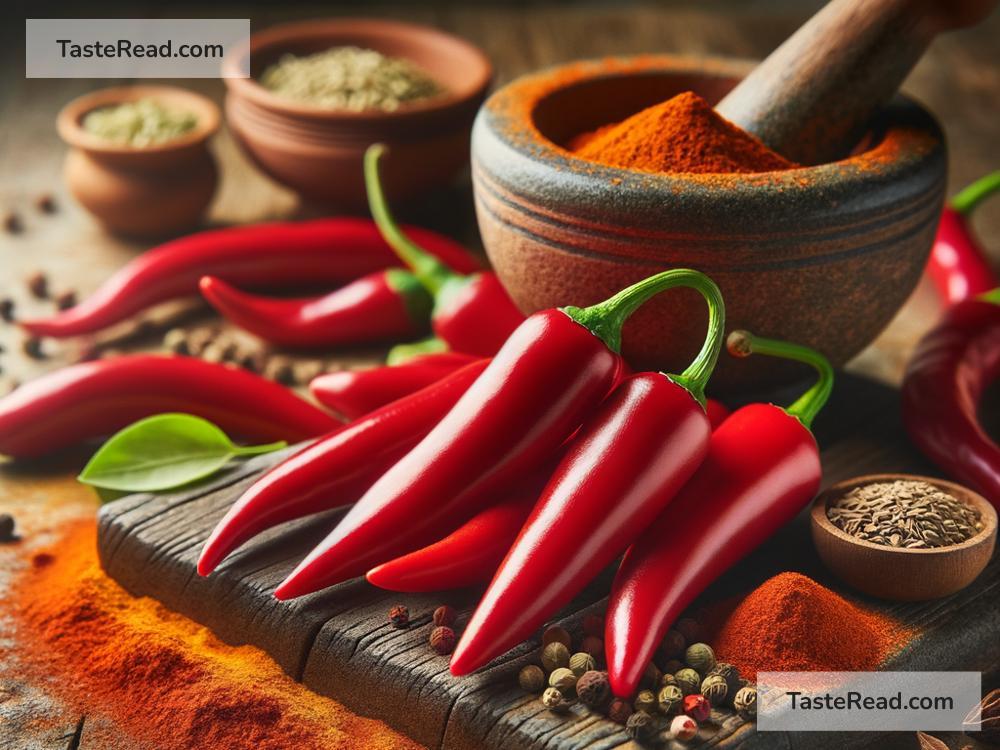How the Chili Pepper Became the Spice of Courage
The chili pepper is more than just a fiery ingredient that adds heat to our favorite dishes. For centuries, it has carried a deeper meaning, symbolizing bravery, resilience, and strength. From its humble beginnings in Central and South America to its global dominance today, the chili pepper has become the spice of courage, inspiring millions with its ability to withstand hardship and bring bold flavors to life.
A Fiery Origin
The story of the chili pepper begins thousands of years ago in the Americas, where indigenous people first discovered its remarkable taste and heat. It is believed to have originated in the region spanning modern-day Mexico, Peru, and Bolivia. Early civilizations, such as the Aztecs and the Maya, cultivated chili peppers and used them not only for cooking but also for medicine, rituals, and even war preparation.
For these cultures, chili peppers symbolized strength and power. Warriors would eat chilies before battles to sharpen their focus and bravery. The heat of the pepper was seen as a way to energize the soul and prepare the body for conflict. This connection between chili peppers and courage began to take root here and later spread across the globe.
A Journey Across Borders
Chili peppers started their journey to other parts of the world after Christopher Columbus’s voyage to the Americas in 1492. He brought chili peppers back to Europe, thinking they were related to black pepper—a highly prized spice at the time. From Europe, chili peppers traveled to Asia, Africa, and the Middle East through trade routes and colonial expansion.
What made chili peppers special was their adaptability. They thrived in a variety of climates and quickly became a staple in many cuisines. In regions like India, Thailand, China, and Korea, chili peppers transformed traditional dishes, adding spice, depth, and excitement. Over time, the pepper came to symbolize boldness—not just in flavor but in spirit.
Why Chili Is Linked to Courage
There’s something unique about eating chili peppers. They create a fiery sensation that can make people sweat, cough, and feel an intense heat in their mouths. This is caused by a natural compound called capsaicin, found in the pepper’s seeds and skin. Capsaicin triggers pain receptors in the body, giving people the feeling of heat without causing real harm.
For many, eating chili peppers is an act of bravery. It’s not just about tolerating the heat; it’s about facing the challenge head-on. This is why chili-eating contests have become popular events worldwide. People proudly display their “spicy courage” as they compete to see who can handle the hottest peppers. It has become a shared experience of conquering fear and discomfort, embodying the idea that bravery comes from pushing boundaries.
Chili Peppers in Culture
Throughout history, chili peppers have held a special place in cultural traditions and folklore. In some cultures, chilies are believed to ward off evil spirits because of their fiery nature. You’ll often find chili peppers used in superstitions, hung on doors, or tied as talismans to bring good luck and protect homes.
In modern times, chili peppers have come to represent boldness and self-expression. Look at hot sauce brands, for example. Many of them feature names like “Death Sauce” or “Daredevil’s Heat” to emphasize the courage it takes to experience their spicy flavors. Even popular phrases like “too hot to handle” show how chili peppers symbolize daring and fearlessness.
A Lesson in Resilience
The chili pepper itself is an inspirational plant. It grows in challenging environments, often surviving poor soils and harsh weather conditions. Despite adversities, it thrives and produces vibrant, flavorful fruits. In this way, the chili pepper mirrors human resilience—the ability to survive hardships and emerge stronger.
Farmers around the world cultivate chilies year after year because of their hardiness and the value they bring to their communities. Chili peppers not only spice up meals; they drive economies and provide livelihoods for millions of people.
How Chili Inspires Us Today
In the modern world, chili peppers remind us that life can be both painful and rewarding. Eating a spicy dish teaches us that sometimes we must endure discomfort to achieve something remarkable—whether it’s the satisfaction of a delicious meal or the fulfillment of overcoming personal fears.
For example, when someone begins to explore spicy food, they usually start small, gradually building their tolerance over time. This is similar to how we face challenges in life—by taking small steps and growing braver with each victory. The chili pepper is a symbol of this journey, showing us that courage isn’t about being fearless but about facing fear and pushing through.
Conclusion
The chili pepper’s journey from ancient rituals to modern kitchens is a testament to its power as the spice of courage. It has inspired people across continents and cultures to embrace boldness, face their fears, and enjoy life’s fiery moments. Whether you’re sweating over a hot curry or conquering a plate of spicy wings, remember that the humble chili pepper represents bravery, resilience, and the spirit to thrive in the heat of life.
So, the next time you enjoy a spicy dish, take a moment to appreciate the chili pepper—this tiny yet mighty ingredient that has sparked courage in hearts around the world for centuries.


